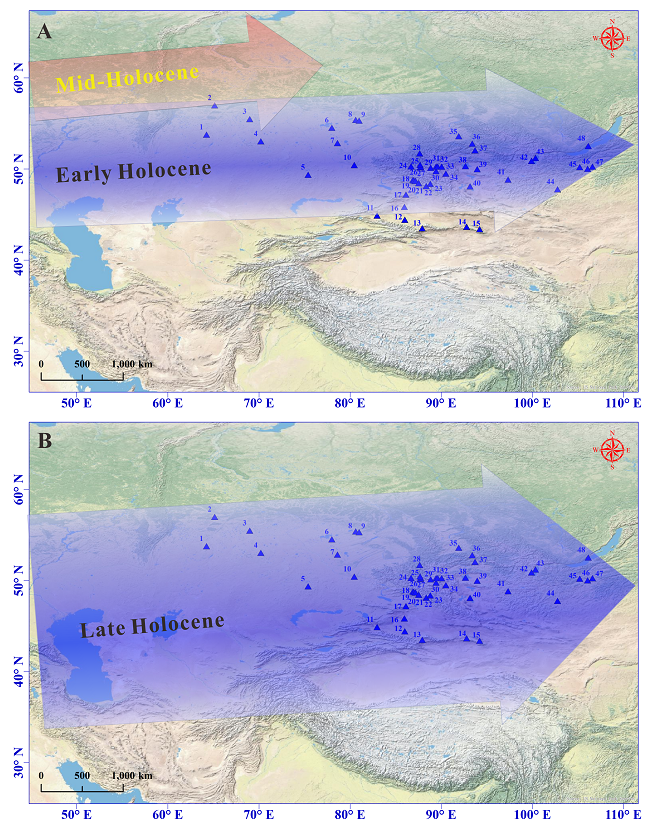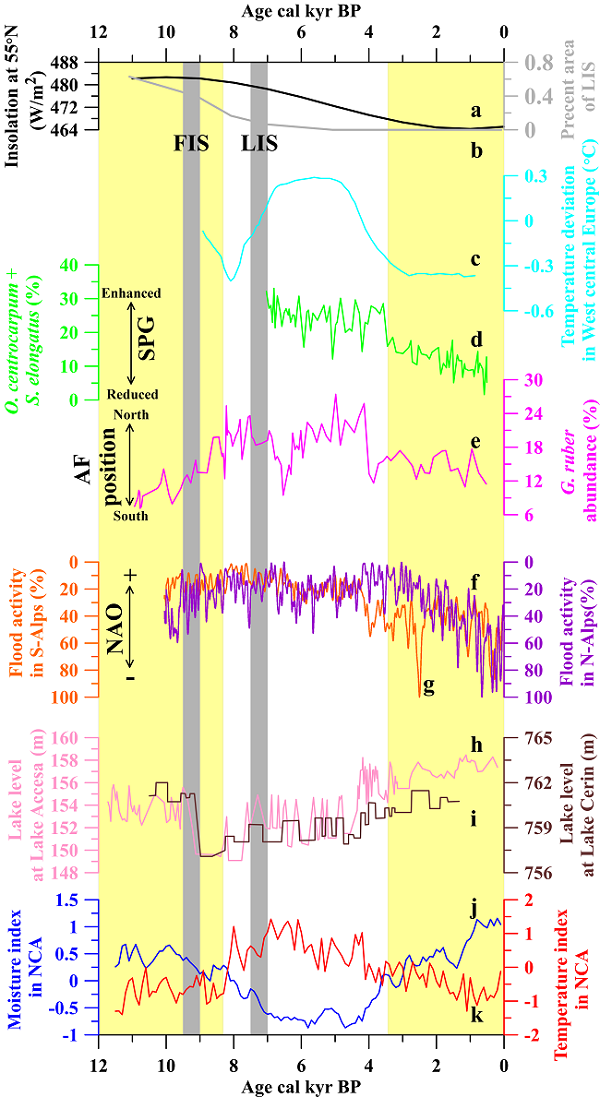Study Reveals How Ice Sheet and Solar Insolation Affect Holocene Moisture Evolution in Northern Central Asia
【Release time:10-May-2021
】【Data source:IEECAS】
Arid Central Asia is one of the world's major sources of dust. It plays a key role in regional climate change, particularly moisture variability, and influences marine ecosystems, atmospheric carbon dioxide concentration, and the global radiation budget.
Global warming has considerably reduced mid-latitude net precipitation by decreasing the latitudinal temperature gradient (LTG) between the Equator and the Arctic. However, the influence of ice sheet and solar insolation on moisture evolution in Central Asia during the Holocene remains uncertain.
Recently, researchers led by Dr. LAN Jianghu from the Institute of Earth Environment, Chinese Academy of Sciences (IEECAS) examined the evolution of moisture availability and temperature during Holocene in northern central Asia (NCA).
The study was published in Earth-Science Reviews on April 21.
They explored the potential role of latitudinal migration in the mid-latitude Westerlies, in response to the remnants of the Laurentide and Fennoscandian ice sheets (LIS and FIS) and changes in solar insolation.
The results showed that the cold and wet conditions during the early and late Holocene in NCA were interrupted by pronounced warm and drought conditions during the middle Holocene.
During the early Holocene, the substantial remnants of ice sheets at high latitudes exerted a dominant control on cold conditions at the mid- and high- latitudes of the Northern Hemisphere. Cold condition would have strengthened the LTG in the Northern Hemisphere by preferentially cooling the high latitudes. The relative wet conditions in NCA were controlled principally by the southern position of the mid-latitude Westerlies under the negative phase of the North Atlantic Oscillation (NAO).
When it came to the middle Holocene, subsequent northward migration of the mid-latitude Westerlies under a positive NAO phase resulted in persistent drought conditions during the thermal maximum, due to the combined effects of relatively higher summer insolation and Arctic amplification as well as sea ice loss.
In contrast, during the late Holocene, southward migration of the mid-latitude Westerlies, driven by declining summer insolation and coincident with the negative NAO phase, increased regional precipitation to persistent relatively wet conditions in Central Asia.
This reconstructed pattern of Holocene moisture availability contrasts markedly with the increase in precipitation over Central Asia under the current anthropogenically forced warming. Thus, further investigation into the multiple forcing mechanisms driving natural and anthropogenic climate change is needed.
The study was supported by the National Natural Science Foundation of China, the Strategic Priority Research Program of Chinese Academy of Sciences, the Second Tibetan Plateau Scientific Expedition and Research, and the Youth Innovation Promotion Association of the Chinese Academy of Sciences.

Fig.1 Spatial distribution of Holocene proxy records and the simplified mid-latitude Westerlies during the Holocene in NCA. (a) Southern position of mid-latitude Westerlies during the early Holocene (blue arrow) and its more northern migration during the middle Holocene (red arrow). (b) Southern migration of mid-latitude Westerlies during the late Holocene. (Imaged by LAN, et al.)

Fig. 2 Comparison of the NCA moisture index with solar insolation, ice sheet, and atmospheric circulation in the Northern Hemisphere. (Imaged by LAN, et al.)
Contact: Bai Jie, Institute of Earth Environment, Chinese Academy of Sciences, Xi'an, China. Email: baijie@ieecas.cn